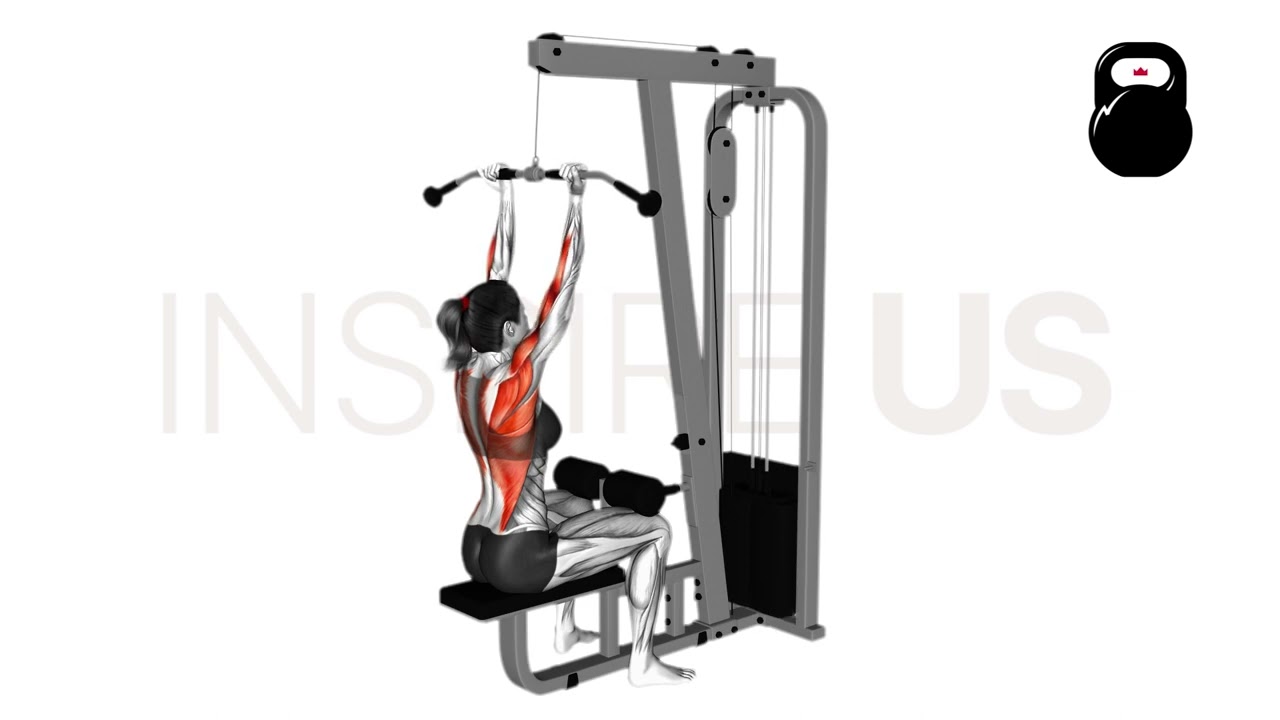Supinated Lat Pulldown: Benefits, Muscles Worked, and More
The supinated lat pulldown; a conventional lat pulldown with the palms facing inwards, shifting muscular emphasis and offering a few other benefits related to ROM and load capacity.
Apart from featuring an underhand grip, the supinated lat pulldown is much the same as a conventional overhand lat pulldown, and can be used for the same purposes as well.
What are Supinated Lat Pulldowns?
Supinated lat pulldowns are a compound machine-based exercise primarily used as a secondary compound movement for building mass and strength in the back.
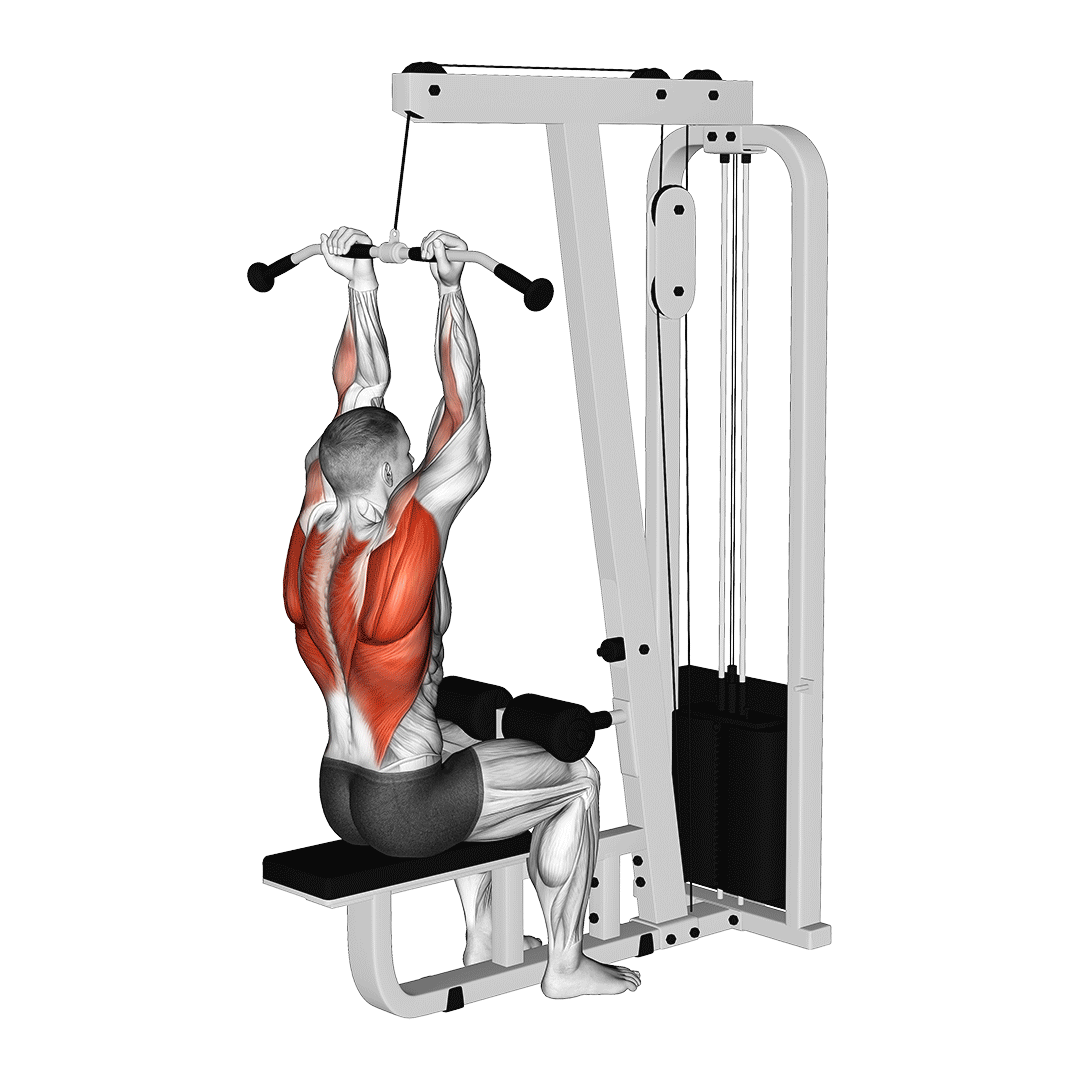
Unlike its pronated grip cousin, supinated lat pulldowns are geared somewhat more towards recruitment of the biceps brachii and trapezius muscles, rather than simply the latissimus dorsi.
The supinated lat pulldown is most often employed by bodybuilders or other types of hypertrophy-focused individuals who primarily require moderate resistance and high volume in their training programs.
Who Should Not Do Supinated Lat Pulldowns?
Although supinated lat pulldowns share a similar safety profile to other machine-based back exercises, the grip used tends towards slightly greater irritation of the shoulder joint.
Those with a history of shoulder, bicep, scapula or clavicle injuries should avoid performing the supinated lat pulldown without prior medical approval.
Furthermore, while suitably intense, the supinated lat pulldown should not be used as a primary source of back training volume due to its machine-based nature and limits regarding muscular recruitment or load.
For a similar exercise more suitable for such a role, try out barbell rows or weighted pull-ups.
How to Do Supinated Lat Pulldowns
To perform a repetition of the supinated lat pulldown, the lifter will begin by first gripping the lat pulldown handle in both hands, palms facing inwards. The exercise may be performed seated or standing, but being seated will provide better stability.
The hands should be spaced approximately shoulder-width apart, setting them as close as possible while still providing space to pull the elbows behind the torso.
Rolling the shoulders into a neutral position, pushing the chest out and leaning the torso back slightly, the lifter then squeezes their lats as they begin to pull the handle towards their chest.
As the bar lowers towards the lifter’s chest, they will pull their elbows behind the torso, retracting the scapula as they do so.
Once the handle is beneath the chin, the lifter slowly releases tension from their scapula as they allow the resistance of the cable to draw their arms back outwards.
When back in the starting position with the arms extended overhead, the repetition is considered to be complete.
Ensure that the entire repetition is performed in a slow and controlled manner, as well as that each repetition starts and ends with the arms fully extended as they grip the handle.
Sets and Reps Recommendation
Aim for 3-4 sets of 8-12 repetitions at a moderate level of resistance.
What Muscles are Worked by Supinated Lat Pulldowns?
Supinated lat pulldowns are a compound movement, meaning that more than one muscle group is targeted at a time.
These muscles are separated according to the type of contraction they exhibit, with “mobilizer” muscles being those that contract dynamically, whereas “stabilizers” exhibit isometric contraction instead.
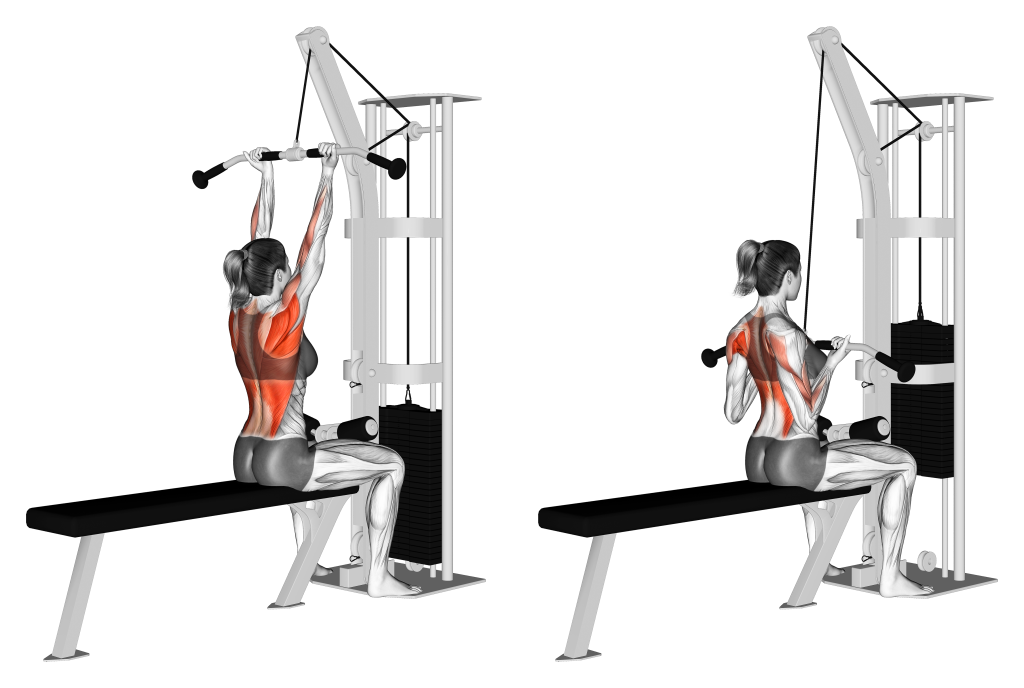
As a general rule, mobilizer muscles are taxed to a greater degree than stabilizer muscles, but will also develop to a greater extent as a result of this greater exertion.
Mobilizer Muscles
Supinated lat pulldowns primarily target the latissimus dorsi, trapezius and biceps brachii - but will also work the rhomboids, teres muscles and infraspinatus to a lesser degree alongside the posterior deltoid heads.
Stabilizer Muscles
In truth, not many muscles are used as stabilizers during a supinated lat pulldown repetition.
However, the brachialis, brachioradialis and pectoralis muscles are indeed contracted isometrically to help stabilize the body.
What are the Benefits of Doing Supinated Lat Pulldowns?
Supinated lat pulldowns are often picked over their pronated counterpart for the following benefits.
Excellent for Building the Traps, Lats and Biceps
In comparison to most other variations of lat pulldown, the supinated variant excels at targeting the upper trapezius, and the biceps brachii - while, of course, also working the latissimus dorsi to a highly intense degree.
With a large range of motion, significant time under tension and relatively isolated recruitment of the upper back and biceps, development of these muscles is all but guaranteed.
For the best results, aim for a moderate amount of volume with each set, as this range is where the supinated lat pulldown is most useful.
Comparatively Greater Loading Capacity
Because the biceps are involved to a greater degree and the overall position of the body is more advantageous, lifters will find that they can lift a comparatively greater amount of weight with a supinated lat pulldown, rather than a neutral or pronated grip variation.
Although greater amounts of weight do not necessarily equate to better results, a greater loading capacity is useful for quite a few long-term program methodologies.
Among these are building strength in a more efficient manner, greater ease with incremental progression and general psychological conditioning of the lifter to heavy loads.
Reduces Risk of Elbow Flaring
In pronated grip pulldowns, lifters flaring their elbows out to the sides can create excess pressure in the shoulder joints - leading to injuries of both a chronic and acute nature.
Fortunately, doing this is nearly impossible with a supinated grip.
Rather than flaring out to the sides during high exertion sets, the elbows will remain largely close to the torso throughout the movement, especially if a proper grip width is adopted.
This greatly reduces strain on the shoulder joint and allows for a much stricter movement pattern overall.
Helps Correct Posture of the Upper Back
The latissimus dorsi, posterior deltoids and trapezius are all partially responsible for keeping the upper back vertical while maintaining proper posture.
If these muscles are weak or otherwise suffering from imbalances, it is likely that the lifter’s posture will also be affected as well.
Fortunately, when combined with an erector spinae exercise, the supinated lat pulldown is excellent for correcting minor or moderate postural issues related to muscular weakness.
In particular, forward-rounded shoulders or a hunched upper back are immediately fixed by strengthening the relevant musculature - outside of a few more medically serious causes, of course.
Carryover to Other Supinated Grip Pulling Exercises
While indirect, supinated lat pulldowns can help teach the lifter how to properly synergize elbow flexion with scapular retraction - or otherwise contracting their biceps with those of their back.
This carries over further into exercises that share a similar set of mechanics, such as the Yates row or chin-up, where the overall pattern of muscular recruitment is quite similar.
Lifters can even further reinforce this specificity by first performing the aforementioned heavier exercises prior to several sets of supinated lat pulldowns. Doing so will not only maximize the development of the back and biceps, but also greatly improve the lifter’s strength and performance in similar movements.
Common Supinated Lat Pulldown Mistakes to Avoid
Although supinated lat pulldowns are ever so slightly easier and simpler than their pronated grip counterpart, avoid the following mistakes so as to prevent injury.
Poor Range of Motion or Rapid Tempo
The strongest source of training stimulus within the supinated lat pulldown is its large range of motion and constant level of tension throughout said range.
This means that shortening the range of motion by failing to complete the full movement will make the exercise less effective as a whole.
Ensure that each repetition starts and ends with the arms fully extended upwards with the scapula disengaged, and that the bar is pulled beneath the chin at the least before transitioning to the eccentric phase of the repetition.
A short range of motion can further tie into a poor tempo, where the lifter may be performing the exercise too quickly - creating much the same disadvantages as a poor range of motion.
Not only should each repetition follow a full movement, but the lifter should also make an effort to slow down each phase of the repetition so that a sufficient time under tension is achieved.
Using Momentum
Similar to performing the exercise too rapidly, performing supinated lat pulldowns with the assistance of momentum generated by muscles other than the mobilizers can negate its benefits as well.
By swinging the torso, scooting the hips back, kicking with the legs or performing any other momentum-generating action apart from pulling with the upper body, the relevant muscles will bear less of the weight lifted.
This leads to said muscles being worked to a lesser degree - as well as a greater risk of injury.
Perform each repetition in a strict and controlled manner, deriving all of the force from the back and biceps.
Involving the Biceps Too Much
Although the biceps should indeed be engaged during a repetition of the supinated lat pulldown, involving them excessively by turning the movement into a curl can lead to bicep tears and generally poor form.
Aim to begin the pull by contracting the lats before sustaining this tension throughout the entire repetition. At most, the biceps should play a secondary role to the muscles of the back.
Excessively Vertical Torso Orientation
While leaning too far back is an obvious mistake, so too is remaining entirely vertical while performing lat pulldowns. This can limit range of motion and cause the muscles of the mid-back to be underutilized purely due to a disadvantageous position.
Aim to tilt the torso back slightly so that the range of motion is increased and the mid-back muscles are allowed to engage to a greater degree.
Variations and Alternatives to the Supinated Lat Pulldown
If the supinated lat pulldown isn’t quite what you need out of your training, try the following alternatives out.
Yates Row
The Yates row is essentially a horizontal pulling version of the supinated lat pulldown, as it also features a supinated grip and significant recruitment of the biceps, trapezius and lats.
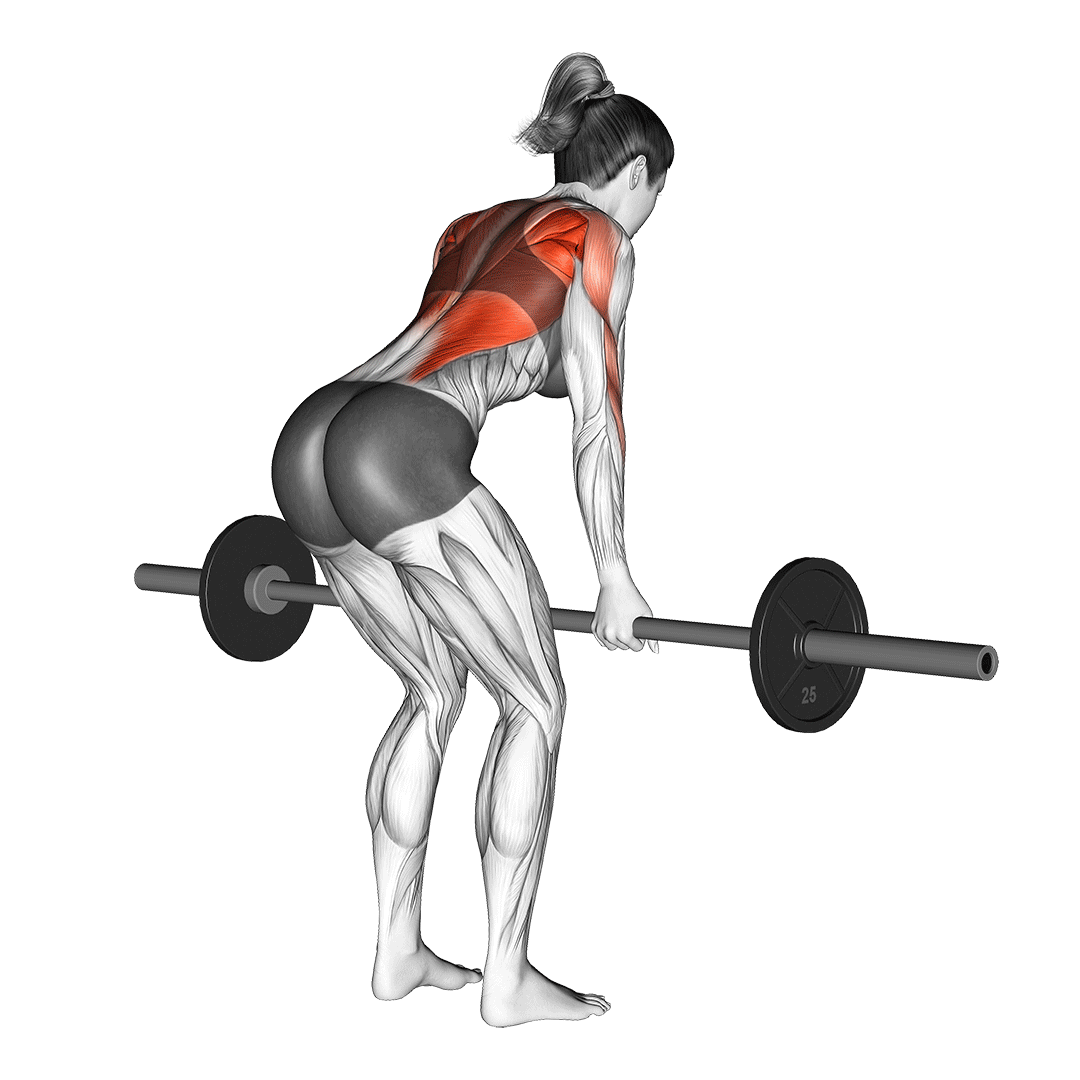
Unlike the supinated lat pulldown however, the Yates row is considerably more difficult and requires greater familiarity with horizontal pulling technique. As a trade off for this greater level of complexity, Yates rows are somewhat better at building strength and mass throughout the entire pull muscle group.
Use the Yates row if your workout plan lacks a primary compound movement or sufficient training intensity.
Close Grip Low Rows
Close grip cable low rows are a machine-based horizontal pulling movement that emphasize the elbow flexors and the mid-back, especially in regards to the lower trapezius muscles.
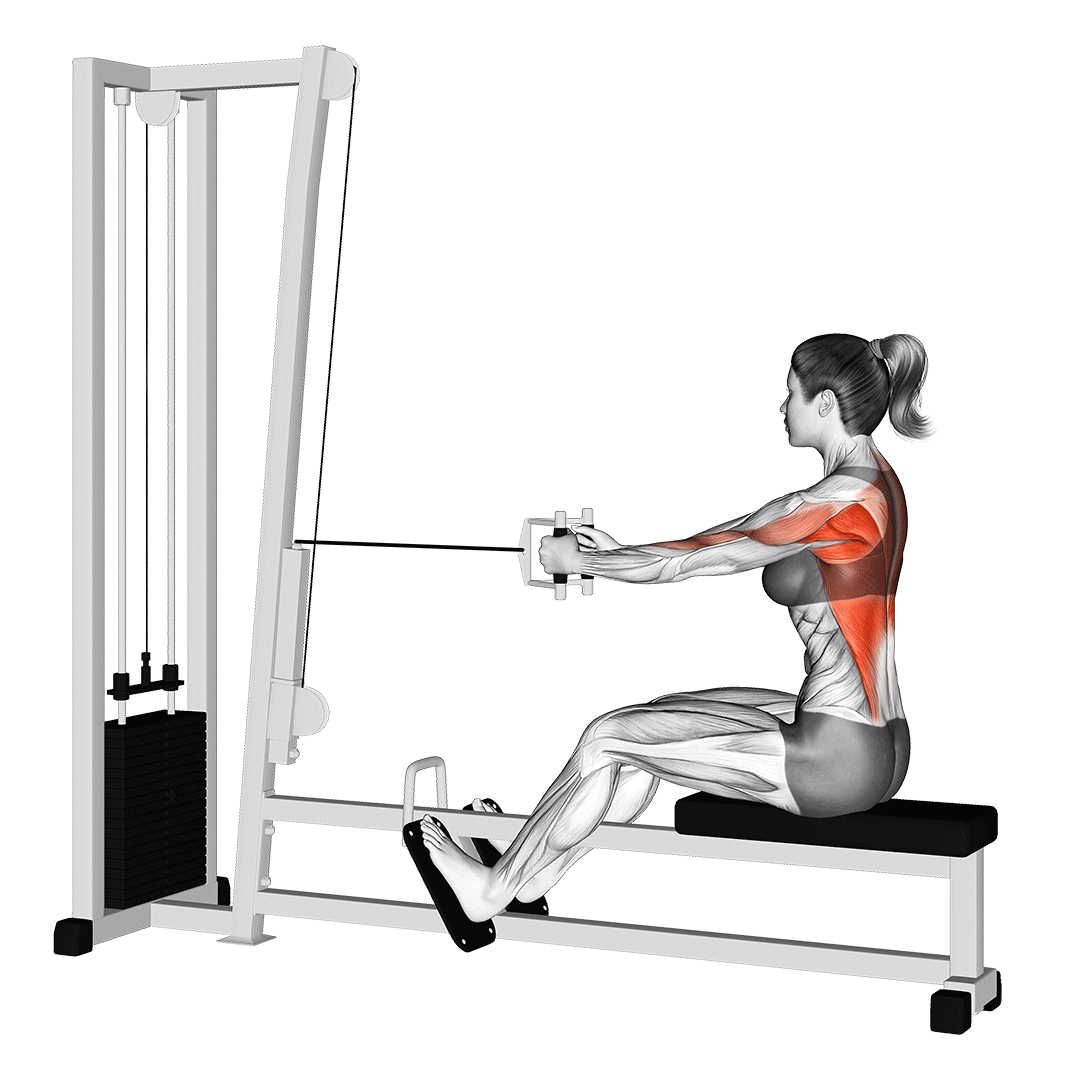
Like the supinated lat pulldown, this particular alternative is excellent for building mass through a full range of motion and comprehensive targeting of the more often forgotten muscles that make up the back.
However, rather than being limited by the lifter’s vertical pulling strength and technique, close grip low rows allow for significantly greater loading to occur alongside a considerably lower risk of injury.
Substitute supinated lat pulldowns with this movement if you wish to maximize horizontal pull carryover, mid-back mass or find pulldowns to be too limiting in certain aspects.
Narrow Grip Supinated Lat Pulldowns
For even greater emphasis on the biceps brachii, one can take the conventional supinated lat pulldown and draw the hands within shoulder-width apart.
This absolutely maximizes recruitment of the trapezius and biceps brachii, but will limit load capacity and outer latissimus dorsi contraction in exchange.
Keep in mind that a narrower underhand grip will also increase strain on the wrists and shoulders, requiring proper mobility to perform safely. Only narrow the grip of the supinated lat pulldown if you have already mastered the regular supinated variant first.
Frequently Asked Questions (FAQ)
Is Using a Supinated Grip Better for Lats?
Not at all - a pronated wide grip is better for targeting the lats, as a supinated grip shifts emphasis towards the inner mid-back muscles and the elbow flexor muscles. A pronated wide grip forces the outer lats to work harder.
Are Supinated Pulldowns Better than Pronated Pulldowns?
Only in certain respects. A supinated grip targets the biceps brachii more, and allows for slightly more weight to be pulled.
Otherwise, both pronated and supinated grip lat pulldowns will recruit much the same muscles to a similar capacity.
What is the Best Grip for Working the Biceps?
The biceps are contracted the most when the wrists are supinated - or what is otherwise known as an underhand or palms-up grip.
Bicep curls, chin-ups and supinated grip lat pulldowns are excellent examples of movements that use this grip to target the biceps better.
References
1. Lehman GJ, Buchan DD, Lundy A, Myers N, Nalborczyk A. Variations in muscle activation levels during traditional latissimus dorsi weight training exercises: An experimental study. Dyn Med. 2004 Jun 30;3(1):4. doi: 10.1186/1476-5918-3-4. PMID: 15228624; PMCID: PMC449729.
2. Leslie, Kelly & Comfort, Paul. (2013). The Effect of Grip Width and Hand Orientation on Muscle Activity During Pull-ups and the Lat Pull-down. Strength and Conditioning Journal. 35. 75-78. 10.1519/SSC.0b013e318282120e.
3. Lusk, S., Hale, B., & Russell, D. (2010). Grip Width and Forearm Orientation Effects on Muscle Activity During the Lat Pull-Down. Journal of Strength and Conditioning Research, 24(7), 1895-1900. doi:10.1519/JSC.0b013e3181ddb0ab

